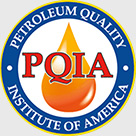 Consistently analyzing oil and lubricants can help companies across all industries extend the life of their equipment, reduce damage and prevent costly failures.
Consistently analyzing oil and lubricants can help companies across all industries extend the life of their equipment, reduce damage and prevent costly failures.
Oil analysis can provide high-level insight into performance of lubricants and equipment, identifying contaminants or other problems which might be impacting operations. This data can be valuable for companies who invest large amounts of capital into their equipment. It can also provide added protection against equipment failure. It can help determine where lubricant or system upgrades can lead to savings in the long run.
“Failures happen frequently and oil analysis will help eliminate a lot of them,” Mike Wyant, Director of Technical Services for PetroChoice’s West Division, said. “If you have an engine failure, it could cost a lot of money in repairs and downtime. A locomotive engine could be two million dollars. There is dirt hauling equipment that costs millions of dollars. These investments are taken seriously.”
Learn More: Ask your sales representative about Engine Guard
Analysis can be performed on any lubricants, not just engine oil. Not all lubricants are tested for the same contaminants, but all lubricants can lose their effectiveness over time.
“Every component is going to have issues. Hydraulic systems usually have elevated dirt levels because they aren’t kept clean,” Wyant said. “The way wear metals are structured for reporting, the hydraulic systems are going to be more restrictive. You need to have less wear metals present for it to work, and you have to have a cleaner system than with an engine oil that is designed to collect contaminants. Hydraulic systems are designed to shed contaminants you don’t want them collecting.”
Related: Learn more about PetroChoice’s oil analysis options here.
Testing can go a long way towards early detection, but performing analysis on a consistent basis is critical for ensuring optimal equipment operation. Consistently submitting lubricant samples for analysis can reveal trends in the results that a one-time test can’t. Tracking these trends can help operators determine if they have problems with their equipment or need to switch to a new product. Falling off an inconsistent schedule or providing inconsistent samples can cause skewed results.
“You lose the value of trending. When you become inconsistent you can’t trend anymore,” Wyant said. “The linear graph that you are looking at won’t be accurate if you lose consistency. When you sample in a different location, you are going to get a different reading. When you sample less frequently it is going to skew that graph. It needs to be consistent for it to work.”
Lubricants are vulnerable to a huge range of contaminants, from dirt to metal shavings to chemicals. While no contamination is good contamination, Wyant said leaking anti-freeze mixing with engine oil have produced some of the worst samples he has seen.
“Anti-Freeze contaminated engine oils are easily the worst we see. It sets up like a Jell-O mold. When you drop the oil pan, the shaft has a depression in the oil around it and it looks like Jell-O. That ethylene glycol in the anti-freeze will polymerize the engine oil and turn it into a massive ball of goo.”



